Retail Fulfillment Trends in Last-Mile Delivery
This is a guide to retail fulfillment trends that are shaping last-mile delivery in 2021.
Home > Blog > E-Commerce Last-Mile Delivery: How to Stay Ahead
Retail and E-CommerceSee how the landscape of e-commerce last-mile delivery is changing and what to do to stay ahead of the curb (+ the best solution for this problem).
When it comes to e-commerce last-mile delivery, the stakes and the demands have never been higher.
In this blog, we’ll look at the nature of the problem and why it’s becoming more and more pressing for businesses - and then we’ll consider what the best solutions to this question need to provide.
In logistics, “last-mile” refers to the final link in the supply chain: the critical business of getting the product into the hands of the end customer.
There are three fundamental elements to consider:
E-commerce has been growing rapidly in recent years, but really exploded with the lockdowns of 2020 and 2021 brought about by Covid-19.
By the end of 2021, the UK had the biggest online retail sector in Europe - accounting for 28.9% of all retail sales.
E-commerce last-mile delivery - the costs involved and the experience customers receive - is, therefore, a huge issue for businesses of all shapes and sizes.

Why is last-mile delivery so important in e-commerce?
In the past, it was commonplace for online orders to require a week or more for delivery. Package tracking was non-existent and delivery windows were frustratingly vague.
Amazon changed all that when it began offering free, next-day delivery through Amazon Prime.
It didn’t matter that Amazon’s shipping costs went through the roof. The e-commerce giant was big enough to swallow that pill for the sake of capturing more and more market share.
But for other businesses, it was a game-changer. Immediately, the bar was raised in terms of expectations.
If you’re competing with Amazon, free, next-day delivery is simply table stakes.
Even if you’re not and you have a product Amazon doesn’t offer (yet), your customers are paying close attention to:
Research confirms this:
More and more shoppers want - and expect - same-day delivery:
And Amazon is raising the bar even further, offering two-hour delivery on some products and order sizes in the UK. The difference between scheduled and on-demand delivery is gradually shrinking, as planning windows get shorter and shorter.
But speed isn’t the only factor that e-commerce businesses need to consider:
What this all boils down to is that customers want retailers to give them choice and flexibility in delivery arrangements, and they’ll reward businesses that do it well - and punish those that don’t.
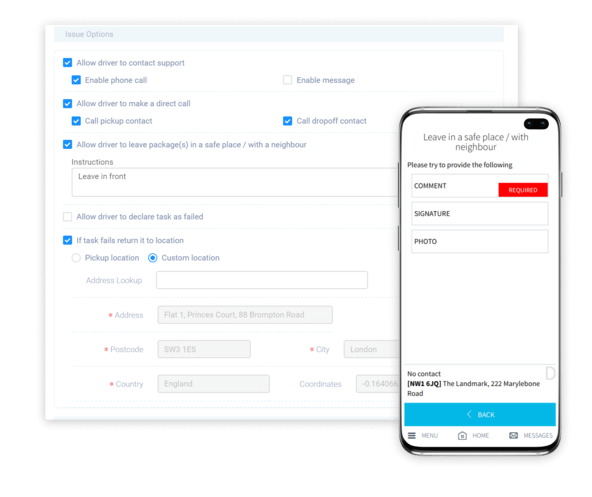
Customer experience matters.
We’ve already noted that 84% of customers would not buy from a business again after a bad delivery experience. Here are a few more stats:
But that’s not the only reason why e-commerce last-mile delivery is so important.
Remember this other stat? Last-mile delivery accounts for 53% of all shipping costs.
And customers don’t want to pay for shipping…
Last-mile delivery is exceptionally expensive for businesses to provide, and as customer expectations, urban traffic congestion, and fuel costs keep rising, it’s getting more so.
That’s why so many retailers have been turning to technology like eLogii to streamline their activities and drive greater operational efficiency.
eLogii is a cloud-based route optimisation and delivery management platform that delivers:
Get in touch to arrange a free demo of the eLogii system, which will show you just some of the ways it can improve operational efficiency, ensure first-rate customer experience, and integrate smoothly with the rest of your supply chain - no matter what kind of business you’re in.
Let’s look at each of those three areas in turn.
This in turn can be broken down into three principal elements.
Whether you use your own in-house fleet, a 3PL (third-party logistics) provider, or your crowdsource drivers in response to changing demand, it’s vital to optimise the routes your drivers take.
Poor routing can result in delays, missed delivery slots, excessive fuel use, unnecessary wage costs, and many other problems.
eLogii uses a highly complex algorithm to calculate the most efficient routes far more quickly and accurately than a human dispatcher could ever hope to.
![]()
But eLogii also understands that routing is not just a maths problem. It needs to be flexible and adaptable. Many route optimisation tools work exclusively on a “depot-delivery-depot” model, for example. eLogii has been designed to handle a wide range of needs:
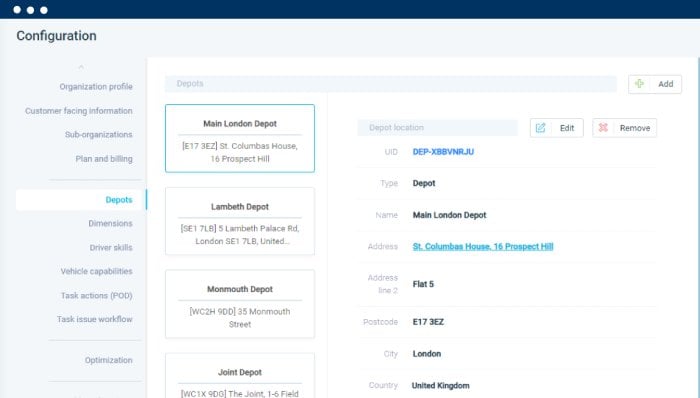
Critically, eLogii also offers dynamic routing - that is, responsiveness to changes in plans while vehicles are already in motion. It incorporates:
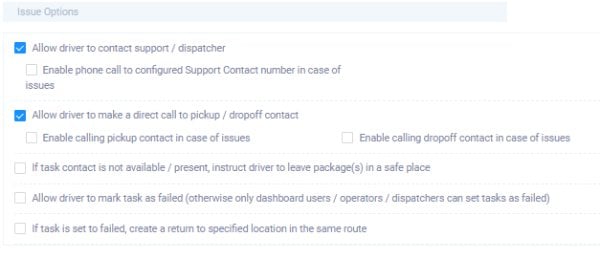
Operational efficiency also depends on getting the right packages into the right vehicles and getting as many as possible into each one.
So an e-commerce last-mile delivery platform needs to incorporate:
eLogii gives users more options in these regards - including customisation of bespoke fields - than any competitor on the market.
It also lets you track the precise location of vehicles in movement, via GPS through the drivers’ mobile app. That’s a vital part of being able to offer dynamic routing. Tools that don’t provide this - Routific, for example - simply can’t handle dynamic routing.
eLogii also helps cut down on driver costs and delays - another significant cost factor.

When planning routes, it can account for driver locations and preferred territories, driver characteristics (eg ability to unload heavy packages), scheduled break times, and other key considerations.
The driver app will also keep track of and feed back on actual routes taken versus planned, PODs collected, timeslots hit and missed, and many other performance KPIs that will enable you to manage your drivers to achieve greater efficiency.
eLogii can help you ensure that all customers receive a consistent, high-quality experience that will keep them coming back.
One key feature of route optimisation and delivery management software is the ability to generate Estimated Times of Arrival (ETAs) accurately, based on the quality of the algorithm’s calculations and its ability to incorporate other factors (eg extra time needed to deliver to a fifth-floor apartment with no dedicated parking).
Many also enable you to notify customers about these ETAs, via SMS, email, and other channels - although a surprising number are restricted in this respect:
But scheduled notifications do not fulfill that customer expectation of being kept in the loop at all times. They expect to be able to track packages’ precise locations and if an ETA changes, they expect to be told.
While some tools restrict access to live ETA notifications (Onfleet customers need to be on the $799 per month Professional package or above, for example), eLogii gives you everything you need to keep your clients informed:
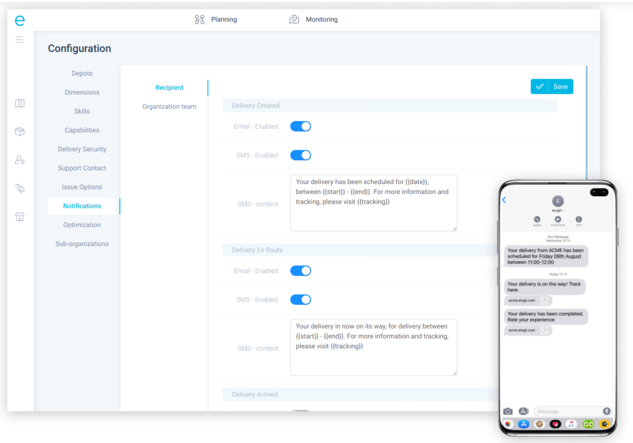
Another key feature of any good last-mile delivery solution is the ability to collect Proof Of Delivery (POD) effectively.
Once again, eLogii offers the widest range of PODs of any tool available, including:
These are collected on drivers’ phones via the mobile app - which time- and geo-stamps the POD for complete traceability.
As mentioned in the last section, the inclusion of barcode scanning is particularly important. Barcodes:
That brings us nicely onto the final consideration: fitting eLogii into the rest of your supply chain operations.
eLogii has been designed to integrate smoothly with order management, warehouse operations, and many other types of software via an extensively-documented API and webhooks.
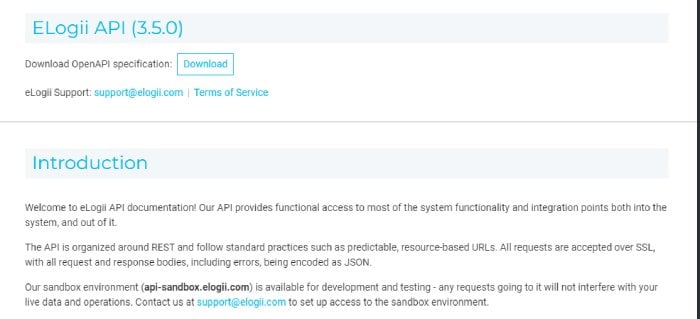
A well-designed API can save you huge amounts of developer time in getting your tech stack to work efficiently. A poor one can be worse than useless. Fortunately, eLogii’s API and webhooks are elegant, up-to-date, and comprehensive in character.
There are indeed logistics tools available that incorporate the upstream supply chain elements - platforms like Bringg and LogiNext. You need to bear in mind that these are mainly designed for enterprises and come with a correspondingly high price tag.
The last few years have seen delivery operations leap from the margins to the centre of many businesses’ concerns.
As costs and customer expectations continue to rise, it’s only going to become more important for e-commerce businesses - on the one hand, as an area for reducing costs; and on the other, as an opportunity for securing brand loyalty.
The best way to maximise the efficiency of last-mile delivery is with a route optimisation platform that includes all the other factors we’ve considered here - fleet usage, driver management, customer notifications, proof of delivery, and supply chain integration.
And eLogii does all of those things and more, and it can do it at scale.
That’s why Ananas - one of the biggest e-commerce players in the western Balkans - chose eLogii to provide its route optimisation, planning, and execution platform for delivery and field services as it expands in a 100 million euro drive over the next five years.
This is a guide to retail fulfillment trends that are shaping last-mile delivery in 2021.
Learn how to use last-mile delivery to build brand awareness, and create a delivery experience that generates brand value and recognition.
This is a complete guide to last-mile delivery. Learn: What is last-mile delivery? How it works? How to improve your last-mile operations? +more
Be the first to know when new articles are released. eLogii has a market-leading blog and resources centre designed specifically to help business across countless distribution and field-services sub sectors worldwide to succeed with actionable content and tips.
